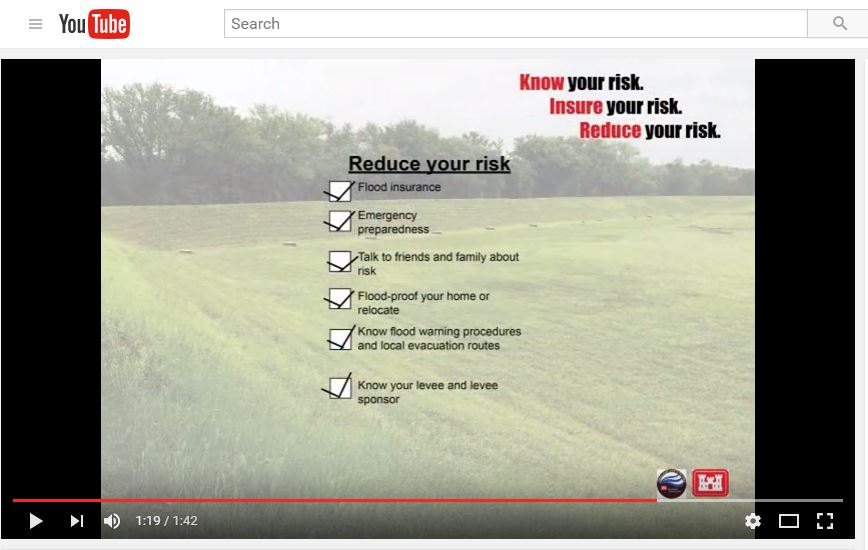
*Click to enlarge/download

View Levee Safety Risk Assessment Video
The Baltimore District currently has 150 miles of federally-constructed levees in the Corps Levee Safety Program that help manage flood risk in southern New York, central Pennsylvania, Maryland, northern Virginia, eastern West Virginia and Washington, D.C.
Risk is managed by routine Levee Safety Program activities, including operations and maintenance, inspections and risk assessments. This program ensures the comprehensive evaluation of our levee systems to manage potential risks to people, property, and the environment.
It is a priority for the Corps to assess how levees are expected to perform and what the potential consequences of non-performance (water coming over top of them, breaches or breaks in the levee) would be. Placing levees into risk categories provides a consistent way to prioritize actions that will help manage the risks associated with owning or operating levees. The Corps uses risk assessments to prioritize life safety risks for its own levee safety activities, and also to provide a basis for communicating risk, so levee sponsors and other stakeholders can make more informed decisions.
The use of risk assessments complements traditional approaches to levee safety, such as inspections; it does not replace them. Risk assessments provide a better understanding of the risk associated with living behind a levee through the likelihood of the levee having flood water on it (flood frequency in the area), anticipated performance of the levee during a high-water event (based on its condition) and consequences if the levee is overtopped by water or breaches (people and property behind levee). These risk assessments help the public understand the risk associated with living behind a levee, and it helps agencies who operate and maintain the levee systems make informed decisions to prioritize funding and take actions to reduce flood risk.
Levees help manage risk; they do not eliminate the risk. Storms can be unpredictable and risk factors are always changing. We all have a role to play in reducing our flood threats. As a member of the public, you are encouraged to know your risks, follow your local emergency preparedness plan, and appropriately insure your risks.
Through the Levee Safety Program, the Corps will continue to look critically and rigorously at the resiliency and vulnerability of our levees, nationwide, and help drive down risk together with all of our partners.